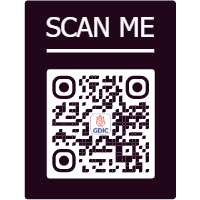Nuclear medicine utilizes Gamma Cameras and radiotracers to provide functional imaging, helping diagnose and treat various diseases. This technology offers insights into organ function at a cellular level, aiding in early...
What is nuclear medicine?
The Gamma cameras are commonly used in nuclear medicine procedures to show the heart, brain, thyroid gland, and other organs and tissues. Nuclear medicine uses low amounts of radioactive material known as radiotracers (radiopharmaceutical materials) to diagnose, it also helps to calculate or evaluate, and treat various diseases.
What is a Gamma Camera?
A Gamma Camera is a special imaging device used in nuclear medicines to detect gamma radiations. Gamma Camera provides functional imaging. This powerful tool plays an important role in nuclear medicine by capturing images of how organs function. This offers insights into physiology processes at cellular level.
What are the uses of Gamma Camera?
The Gamma Camera is widely used in various medical practices, usually for monitoring and diagnosing diseases. Some are like-
- Helps to evaluate blood flow to your heart muscles.
- It is also used in stress tests like TMT (Tread mill test).
- It also helps to identify tumors.
- In tracking of effectiveness in cancer treatment.
- It also helps to detect fractures, or bone infections.
- Helps in thyroid nodules and cancer.
- Measure thyroid activity.
- Evaluates kidney function and urine flow.
How does a Gamma Camera Work?
There are several key steps of Gamma Camera working procedure-
- A radioactive substance will be injected in you either by injected, swallowed or inhaled.
- This tracer will target that organ only.
- The camera will be equipped with the scintillation crystal, which helps to detect gamma rays.
- The light signal will transform into electrical impulses
- A computer will process these signals to create detailed images.
Why is Gamma Camera Used?
- It helps to detect early disease before the disease is visible.
- It is a non-invasive procedure and safe procedure.
- Shows how organs works
- Your doctor can track the process and treatment effectiveness.
Type of Gamma cameras
- Single head gamma camera- Basic model
- Dual head - Provides faster and detailed imaging
- Triple head- Use for highly detailed imaging in rare cases.
Conclusion:
Gamma cameras (also called Anger cameras and scintillation cameras) are the most common means of forming an image.With timely advancements in the Gamma Camera, it is a game changer and plays a crucial role in personalised nuclear medicine. This is an essential tool in modern medicine. It helps your doctor to diagnose and monitor accuracy and real time imaging for treatment effectiveness. In cardiology, oncology, neurology and other fields it is able to capture functional processes.
Frequently Asked Questions:
Q. What are the diseases in which nuclear medicine is used?
- Brain Perfusion Scan (Book Now)
- Cisternography (Book Now)
- Thyroid Uptake & Scan (Book Now)
- Parathyroid Scan (Book Now)
- Myocardial Perfusion / Viability Scan (Book Now)
- MUGA (Multigated Blood Pool Imaging) (Book Now)
- Lung perfusion & Ventilation Scan (Book Now)
- Lymphoscintigraphy (Book Now)
- Bone Scan (Book Now)
- Infection Imaging (Book Now)
- MIBG Scan (Book Now)
- Iodine Ablation Therapy (Book Now)
- Liver Scan (Book Now)
- Hepatobiliary Scan (Book Now)
- GE Reflux (Book Now)
- GI Bleed (Book Now)
- Meckel’s Scan (Book Now)
- Renal Scan (Book Now)
- VU Reflux (Book Now)
- Testicular Perfusion Scan (Book Now)
- Scintimammography (Book Now)
Q. What preparations are needed for any scan by Gamma Camera?
Depending on what scan you’re having at Ganesh Diagnostic and Imaging Centre, the no.1 diagnostic centre might be some preparation. All instructions will be on your appointment letter – please read it carefully and if you’ve any doubt consult with your doctor.
Q. In which scan does this gamma camera use?
Here are some most common scan in which Gamma Camera is used-
- Thyroid Scans
- Lung Scans
- Kidney Scans
- Liver and Gallbladder scans
- Bone scans









